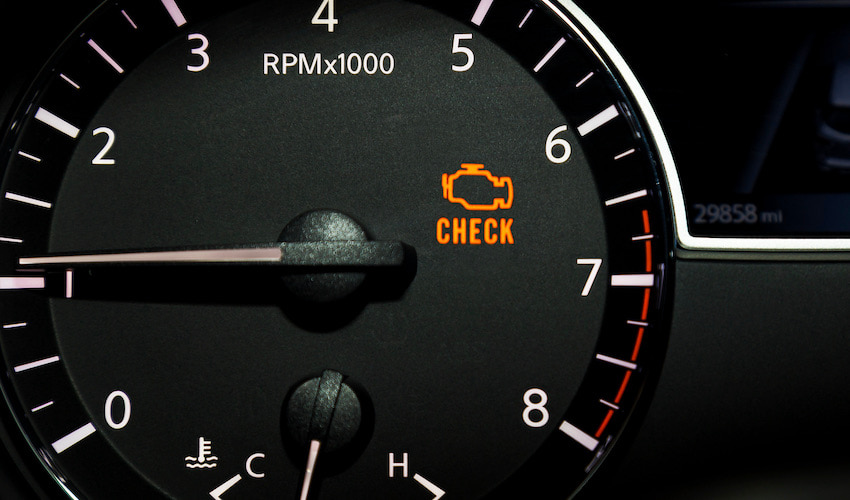

It’s hard to articulate just how important preventative maintenance is to preserving the health and well-being of your fleet. No matter your fleet size, whether it be five to a thousand vehicles, it is critical to invest in routine maintenance to ensure not only optimal performance, but fleet longevity, for maximum ROI.
It’s far easier and less costly in the long run to manage and sustain fleet health than it is to correct catastrophic failures that may put both drivers and vehicles out of commission. Both result in lost revenue and other detrimental effects.
While you may understand the necessity, sometimes the hardest part is implementing a plan to stay on top of maintenance. With that in mind, this guide will walk you through how to create a comprehensive semi truck maintenance checklist. First, let's start with the basics.
Preventative maintenance is the act of engaging in regular maintenance of assets in order to keep them running and to prevent any costly downtime or overall equipment failure.
When it comes to semi trucks, this includes things like oil changes, checking fluid levels, replacing filters, tire inspections, and more.
By keeping a watchful eye on vehicle health, you should be able to avert some treatable issues that, if left unchecked, could otherwise turn into something much more damaging and costly.
For instance, observing low fluid levels and replenishing them could circumvent eventual engine damage should low levels go unnoticed. These are the types of small but essential checks that can maintain fleet health, with little to no downtime, but exponential impact.
While implementing a semi truck maintenance program may seem costly and laborious, especially in larger fleets, there are a few simple things you can do to make the process seem much less daunting.
The first step in initiating a semi trailer maintenance checklist is to take stock of your vehicles. Every vehicle has a unique history and is likely at a different stage in its vehicle lifecycle. Since no two vehicles are exactly alike, they will need their own maintenance plans.
Getting a feel for each vehicle is the first step in understanding overall needs. Note things like how often a vehicle is driven, the mileage, fuel types, weather conditions they operate in, and other attributes that are important when considering a maintenance routine. The more detail the better.
Not only are maintenance records important for executing a plan, but they’re also required by the Federal Motor Carrier Safety Administration (FMCSA) in order to authenticate and regulate vehicle safety. Every vehicle needs a detailed record of ownership and maintenance, including:
These records need to be kept and stored for at least a year for every vehicle in active operation and six months following non-operation. Keeping meticulous logs can save you from costly DOT compliance violations.
The second step is to create a truck preventative maintenance schedule for each individual asset based on its unique criteria. How and when a vehicle is used will dictate how often it will need servicing and other criteria.
Things like mileage and engine hours will also help define the maintenance schedule, making it crucial that these metrics are constantly tracked for accurate forecasting. Keeping detailed records will allow for streamlined scheduling.
Knowing where a vehicle is at any given moment, and its current route, is helpful for a fleet manager to schedule a vehicle for servicing with as little downtime as possible. Knowing a shipment is set to deliver with a two-day window between routes, for example, gives a fleet manager the opportunity to squeeze the truck in for a stop at a service station for a check-in.
These small but critical pulse checks can be lifesavers on the road, keeping both driver and vehicle operating smoothly and in prime condition.
Beyond driver vehicle inspection reports mandated by FMCSA as part of routine safety inspections, there is opportunity to empower every driver to perform additional vehicle wellness checks to keep their vehicle operating at peak performance. After all, who is better suited than the person behind the wheel at understanding the ins and outs of a particular truck?
Training drivers to keep a watchful eye on vehicle health is your first line of defense. Encourage them to get in the habit of consistent preventative maintenance check-ins and to relay the information to managers as part of their regular operations.
Things like brake condition, tire wear, fluid levels, fluid leaks, wire connections, lights, and more can easily be checked by drivers without a lot of effort. What little time it does take will improve vehicle longevity over time.
Now that you have detailed records for every vehicle and have trained your drivers to perform consistent self-checks, a complete semi truck service checklist will help make sure nothing is forgotten during routine preventative fleet maintenance with a service provider. Below is a list of basic needs. Take this as a foundation for your own unique semi truck preventive maintenance checklist:
There are additional seasonal factors to consider, depending on driver location. Extreme weather can take a steep toll on any vehicle, increasing the need for regular servicing. In addition, it is important to perform consistent inspections based on mileage milestones as part of a routine maintenance regimen.
If all this sounds a little overwhelming, rest assured, there are tools that can greatly simplify the process. Taking preventative maintenance processes digital through an all-in-one fleet management solution can remove a lot of the legwork. Here’s how.
Once a vehicle is added to the system:
Contact us or book a demo to learn more about how our automated preventative maintenance features can help you stay on top of fleet health with minimal effort.